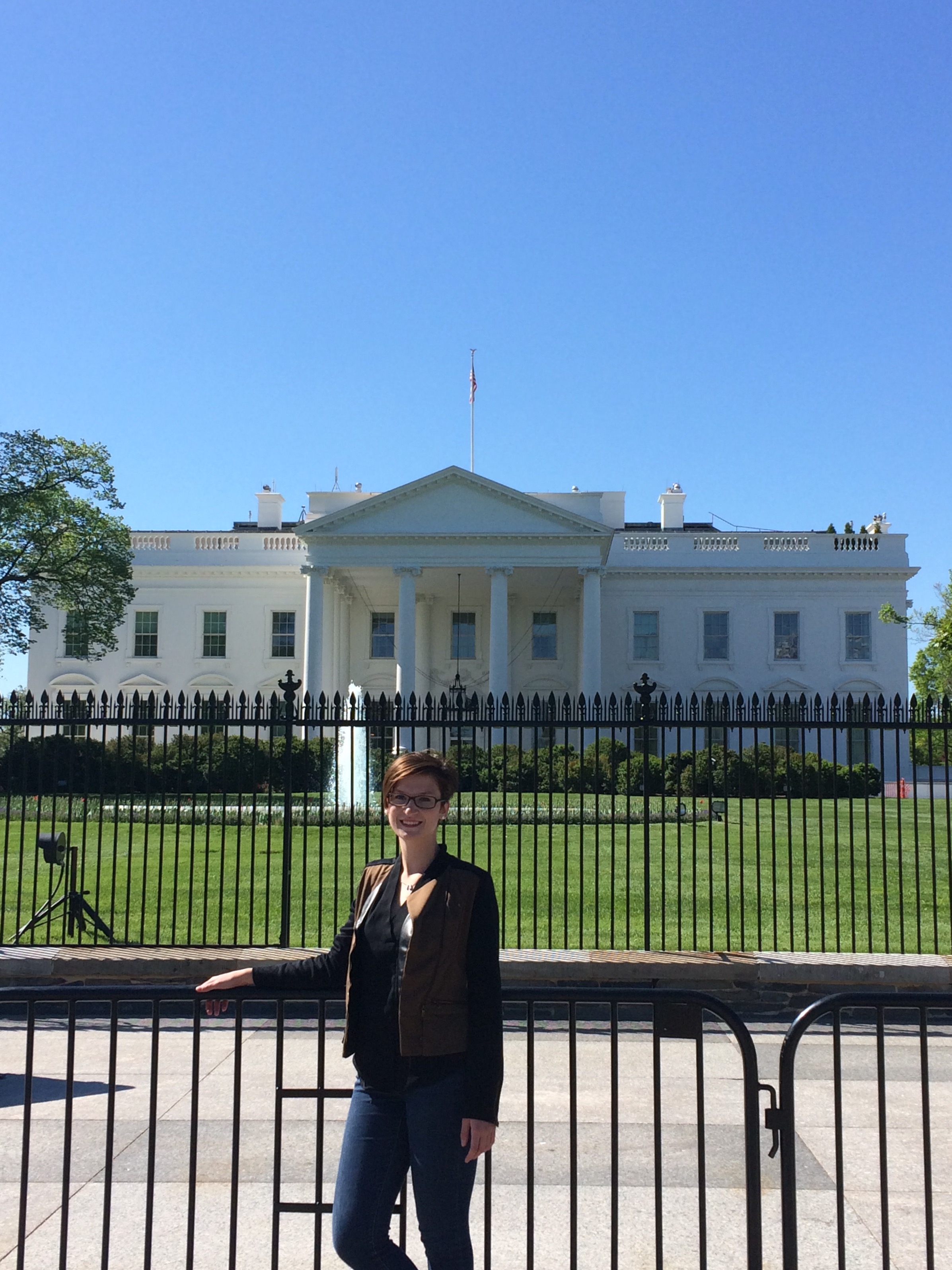7 September 2016
Texas Earthquakes: Working together and keeping the data open
Posted by Shane Hanlon

I participated in the AGU CVD in DC this spring. Photo credit – Taylor Borfeldt
This is a guest post by graduate student Taylor Borgfeldt as part of our ongoing series of posts where we ask students to share their experiences in science communication.
In Texas, relatively small earthquakes have caused structural damages to houses, partly due to such a shallow earthquake source. The public who experiences the seismic events or live in large metropolitan areas can have strong reactions to the shaking or possibility of an event – that’s where TexNet comes in.
TexNet is part of the Center for Integrated Seismicity Research (CISR) led by the Bureau of Economic Geology (BEG) at the University of Texas at Austin. After receiving a grant from the Texas government during the legislative session of 2015, the BEG, UT’s Institute for Geophysics (UTIG), SMU and Texas A&M began a multidisciplinary investigation into the increased rates of earthquakes occurring in the state of Texas. The team is made of seismologists, structural geologists, petroleum engineers, civil engineers, and even social science researchers. The goal of the project is to not only investigate the mechanisms for the earthquakes, but to analyze the infrastructure and predicted level of ground shaking. The social science team is conducting studies of the Texas population to gauge the level of knowledge citizens may have of these events. At the moment, Texans are not well-versed in earthquakes. They can tell you about tornadoes because anyone who grew up here practiced tornado drills in class, sat in halls of their house during tornado warnings, and watched ‘Twister’ as a kid. No such training is in place for an earthquake.
TexNet – CISR is a unique research opportunity because it is intended to bring academics, state and local government, and industry together to solve a problem that impacts the entire state. The program is also very dedicated to figuring out how best to disseminate the results of the study to the people of Texas, creating a more open line of communication between academics and the people who are impacted by the events.
After working for a state representative in the Texas government between my undergraduate and graduate careers, I was exposed to ‘how the sausage is made’. I realized all the work that goes into each line and word choice for an individual bill. I think TexNet – CISR is a great chance for me, an early career graduate student, to participate in something that will directly contribute to the world outside of academia. Although working with multiple institutions can cause some headaches along the way, I think the overall goal is very positive for Texans and research
-Taylor Borgfeldt is a graduate student at the University of Texas at Austin and is creating crustal seismic velocity models of the state of Texas.


 The Plainspoken Scientist is the science communication blog of AGU’s Sharing Science program. With this blog, we wish to showcase creative and effective science communication via multiple mediums and modes.
The Plainspoken Scientist is the science communication blog of AGU’s Sharing Science program. With this blog, we wish to showcase creative and effective science communication via multiple mediums and modes.
Hi Taylor,
I am the Executive Director at the educational 501-c3 non profit organization – Texas Educational Seismic Project (TXESP). I fully support your opinion of the role of TexNet-CISR as a vehicle to share and integrate data, but also encouraging a turn towards scientific inquiry with public policy. I am trying to launch a 4-school “Seismographs in Schools” program here in Houston. Our current station, E1TX, is part of the IRIS network, and you are welcome to any of our raw data or magnitude calculations. Let’s chat offline….pm at “[email protected]” or send me a message thru our website http://www.txesp.org. Kindest Regards, Kristi Fink